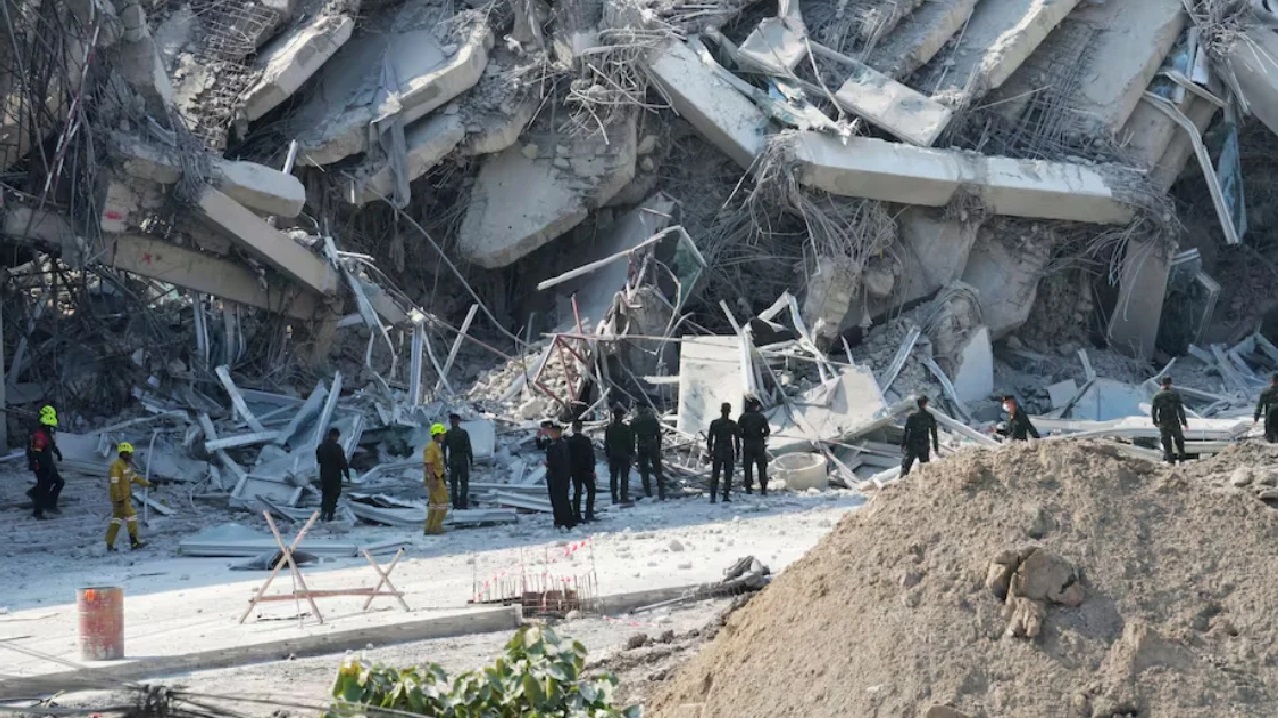On March 28, 2025, a powerful 7.7-magnitude earthquake struck central Myanmar, causing widespread destruction and panic across the region. The tremors were felt as far as Bangkok, Thailand, leading to significant structural damage and casualties. This seismic event has underscored the vulnerability of Southeast Asia to natural disasters and the urgent need for preparedness and resilience.
Epicenter and Immediate Impact
The earthquake’s epicenter was located near Sagaing, approximately 16 kilometers northwest of the city, at a shallow depth of 10 kilometers. The shallow depth intensified the shaking, resulting in severe damage to infrastructure and buildings in the immediate vicinity. In Mandalay, Myanmar’s second-largest city, numerous structures collapsed, including residential buildings and a historic 90-year-old bridge over the Irrawaddy River. Streets were strewn with debris, and emergency services scrambled to rescue those trapped under the rubble.
Casualties and Damage in Myanmar
Reports from local media indicate that at least 20 people have lost their lives in Mandalay alone. A mosque collapse accounted for ten fatalities, while a monastery’s destruction injured several monks. In Toungoo Township, a school serving as a shelter for displaced individuals collapsed, resulting in five children’s deaths and trapping over 20 others. The capital city, Naypyidaw, also experienced significant damage, with buckled roads and partially collapsed ceilings in various buildings. The iconic Ava Bridge in Sagaing was reported to have collapsed, severing a critical transportation link.
Ripple Effects in Thailand
The earthquake’s impact extended beyond Myanmar’s borders. In Bangkok, located approximately 1,000 kilometers south of the epicenter, the tremors caused high-rise buildings to sway, prompting mass evacuations. A 30-story government office under construction in the Chatuchak district collapsed, trapping at least 43 workers beneath the debris. Emergency responders are engaged in a frantic search and rescue operation to locate survivors. The Thai government has declared a state of emergency in the capital, with Prime Minister Paetongtarn Shinawatra overseeing the crisis response and urging the public to remain calm amid fears of aftershocks.
Regional Impact and Response
The seismic waves were felt across a broad swath of Southeast Asia. In China’s Yunnan province, bordering Myanmar, residents experienced strong tremors, leading to damaged homes and injuries in the city of Ruili. Provinces such as Guizhou, Guangxi, and Sichuan also reported feeling the earthquake. In India, tremors were felt in the Delhi-National Capital Region (NCR) around 11:50 AM IST, causing people to evacuate buildings. Similarly, residents in Hanoi and Ho Chi Minh City, Vietnam, reported shaking, leading to precautionary evacuations.
International Reactions and Aid
The international community has expressed solidarity with the affected nations. Indian Prime Minister Narendra Modi extended prayers for the safety and well-being of the people in Myanmar and Thailand, stating that India stands ready to offer all possible assistance. Humanitarian organizations are mobilizing resources to provide aid and support to the impacted regions.
Historical Context
Myanmar is situated along the Sagaing Fault, a major tectonic boundary between the Indian and Eurasian plates, making it highly susceptible to seismic activity. Historically, the region has experienced several significant earthquakes. Between 1930 and 1956, six strong quakes of magnitude 7.0 or more struck near the Sagaing Fault. More recently, in 2016, a 6.8-magnitude earthquake in the ancient city of Bagan resulted in three deaths and caused extensive damage to historic temples.
The March 28 earthquake serves as a stark reminder of the seismic risks facing Southeast Asia. The immediate priority remains search and rescue operations, medical care for the injured, and provision of shelter and resources for those displaced. In the longer term, this event highlights the critical need for robust disaster preparedness strategies, improved building codes, and regional cooperation to mitigate the impact of future earthquakes. The resilience and solidarity demonstrated in the aftermath will be pivotal in the recovery and rebuilding efforts.
(With inputs from agencies)








